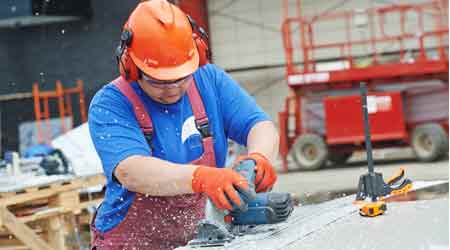Determining When to Repair or Replace Power Tools
Part 4 of a 4-part article on power tool management
Among the most important elements of any system designed to help departments track and manage their power tools is understanding the condition of any particular tool and determining whether to replace that tool or repair it.
“Our MCR guys keep track of some of the tools by the number of days (a tool is) used, as opposed to hours,” Borst says, adding that awareness of tool condition “also occurs based on the safety training for our staff members. They’ve been instructed that if they see any faulty (tool) conditions, whether it’s the cord or guards or anything of that sort — if it’s damaged in some way — they should note those things when they return the tool. Or even if it’s on issue to them, make sure they note any deficiencies in those tools. Then we use local vendors to make repairs. We don’t do any on site.
“Monitoring the condition of tools is incumbent on the employees. They’re our first line of defense when it comes to things like that. Of course, our MCR staff will look at it as well, but we’re relying on our users that if there are any (tool) deficiencies, they note it and let us know so we can take care of it.”
At what point does the department replace a damaged or aging power tool?
“Our rule of thumb, I think like most entities out there, is that if the repair cost is roughly 50 percent of purchase cost, that’s where we draw the line and ask if it’s worth it. If we approach that echelon, should we consider replacement, as opposed to repair?”
Borst and the other supervisors get involved in the process once a technician makes a request to replace an existing tool, and the decision often involves more than a one-for-one replacement.
“The purchase request will come to me or another supervisor, and we review it with the individual who needs it and assess the cost and whether it falls within our budget,” he says. “An employee must have a supervisor’s signature on the request. We’ve tried to go with a little uniformity in some of the power tools we provide in order to streamline what we’ve got. For example, with battery-operated tools, we don’t want to have to order multiple kinds of batteries. So we have a standard for (power tool) orders.”
The process also can include a request from a technician to add a power tool to the arsenal.
“When it comes to a specialty item, the employee can request something, such as a unique feature they wanted, we ask, ‘Is this something we need? Is this something we can afford? Are we going to get enough use out of?’,” he says. “So we might order one to see how it works before we go overboard and buy too many. The employee does have some leeway as far as asking for what they want, but it’s not guaranteed they’re going to get that.”
Related Topics:













